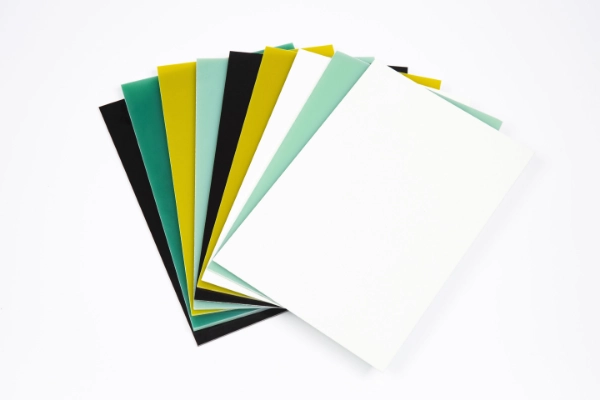- This topic is empty.
-
AuthorPosts
-
2024-10-11 at 1:42 pm #23533
G10 fiberglass board is a high-performance composite material that is widely used in various industries due to its exceptional mechanical, electrical, and thermal properties. It is known for its strength, dimensional stability, and resistance to environmental factors. In this blog post, Hangzhou Blue Sun will share the manufacturing process of G10 epoxy fiberglass board for sale to ensure the consistent performance and high quality of the material.
Composition of G10 Fiberglass
G10 fiberglass is composed of woven fiberglass cloth that is impregnated with epoxy resin. The glass strands provide incredible tensile strength and barrier to effects such as corrosion, while the epoxy resin contributes to the material's chemical resistance and electrical insulation properties.
Manufacturing Process
1. Weaving the Glass Fiber: The process begins with the selection of high-quality glass strands, which are then woven into a fabric. This fabric provides the structural base for the G10 material.
2. Impregnation with Epoxy Resin: The woven glass fabric is then impregnated with epoxy resin under controlled conditions. This resin is a thermosetting polymer that, when cured, provides the board with its characteristic properties.
3. Lamination: The impregnated fabric is layered and subjected to high pressure and temperature. This process, known as lamination, causes the epoxy to cure, binding the layers together and creating a solid, strong material.
4. Curing: The laminated material is then allowed to cure under heat and pressure. This step is critical for the development of the board's mechanical strength and dimensional stability.
5. Cutting and Shaping: Once the material has fully cured, it is cooled and then cut to the desired shapes and sizes. This can involve precision cutting and machining processes to achieve the specific dimensions required for various applications.
6. Quality Control: Throughout the manufacturing process, stringent quality control measures are implemented. This includes careful selection and testing of raw materials, exact control of the resin impregnation process, and monitoring of the curing conditions. The mechanical, electrical, and thermal properties of the finished products are checked through a variety of tests, including tensile tests, dielectric strength tests, and thermal cycling tests.

Quality Control Measures
Quality control is a critical aspect of G10 fiberglass board manufacturing. It ensures that the material meets the required standards for strength, insulation, and other properties. This includes:
1. Testing Raw Materials: Ensuring that the glass strands and epoxy resin meet the necessary specifications.
2. Monitoring the Impregnation Process: Controlling the amount of resin and the evenness of distribution within the fabric.
3. Curing Conditions: Precise control of temperature and pressure during the curing process to ensure optimal material properties.
4. Final Product Testing: Conducting a series of tests to verify the mechanical, electrical, and thermal properties of the finished boards.
Innovations in Production
The production of G10 fiberglass is an area of ongoing research and development. Innovations aim to improve the material's properties and production efficiency. Some recent advancements include:
1. Eco-Friendly Epoxy Resins: Development of epoxy resins that are more environmentally friendly.
2. Enhanced Fiber Winding: Improvements in the glass fiber winding process for better strength distribution.
3. Advanced Curing Techniques: Use of higher temperature and pressure curing methods to enhance material properties.
4. Nanoparticle Addition: Incorporation of nanoparticles to improve specific properties such as thermal conductivity or fire resistance .
Applications
G10 fiberglass board is used in a wide range of applications due to its high strength, low weight, chemical resistance, low water absorption, and excellent electrical and thermal insulation properties. Common uses include:
1. Electrical Insulation: In the form of terminal boards, electrical and electronic test equipment, and electric rotor insulation.
2. Structural Components: In aerospace, automotive, and marine industries where high strength-to-weight ratio is required.
3. Cryogenic Applications: Due to its dimensional stability over a wide temperature range.
4. Marine Equipment: Because of its resistance to moisture and chemicals.
The manufacturing process of G10 fiberglass board is a testament to the precision and care required to produce a material with such a wide range of applications. Its combination of properties makes it a popular choice in industries where performance and reliability are paramount.
https://www.bluesun-elec.com.cn/Manufacturing-process-of-G10-epoxy-fiberglass-board.html
http://www.bluesun-elec.com.cn
Blue Sun -
AuthorPosts
- You must be logged in to reply to this topic.